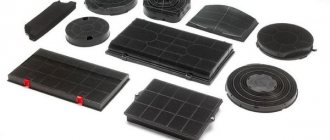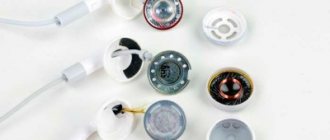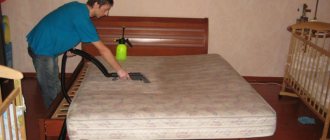A coffee machine is a convenient technique that allows you to prepare a flavorful drink at home. For long-term operation of the device, regular maintenance is required, which will preserve its functionality for a long time. Untimely cleaning leads to the formation of scale, which entails wear of important parts. To prevent damage, the heating element should be decalcified.
How to Determine When Cleaning Is Needed
Scale formation is the main sign that the device requires cleaning. Its components can penetrate into the drink, causing the taste to deteriorate. It will be dangerous to consume it, since particles of coffee beans are considered the best breeding ground for microbes. If sediment is found in the cup, the device should be cleaned.
Modern devices have a useful part - a sensor that shows the degree of contamination. If the indicator lights up red, then you need to disassemble the device and clean it. This procedure can be carried out in different ways, it all depends on the type of equipment. It is better to choose a coffee machine cleaning product specifically designed for this purpose.
Clear indicators that the coffee machine needs to be cleaned are:
- the finished drink began to flow in a thin stream and slower than usual;
- the finished drink flows out with a loud noise;
- An unusual light thick substance appeared in the finished drink.
Common causes of coffee machine malfunction are:
- blockage of sections of the apparatus's hydraulic system by scale;
- obstruction to water flow in the apparatus system;
- destruction of connecting parts.
In case of improper operation of the device, that is, failure to clean it in a timely manner, such breakdowns are not considered a warranty case for free service repair.
Anti-scale procedure
Regularly wiping surfaces, rinsing the brewing unit and automatically flushing the channels, which any coffee machine does on its own when turning it on and off, is not what I (and all users) usually mean by cleaning a coffee machine.
But, taking this opportunity, I will say that if by external wiping you are unlikely to greatly extend the life of the device, but will only emphasize its attractive appearance, then you should not neglect washing the brewing unit. “The theory is good, we already know that, smart guy, let’s get specific” - I can already hear such non-verbal messages.
And the answer is very simple: according to the instructions! Yes, if you haven’t looked at it yet, run and read it. Each, I repeat, each instruction contains a step-by-step description of this usually simple procedure. At the same time, there is no universal recipe for specific clicks and actions for all devices. You need to know which key to press, and what to fill in where and when.
It happens that in the 15-20 minutes it takes to clean, you need to perform about 10 different actions. Moreover, if you make a mistake, you will often need to start the process again. But there is no need to be afraid. Everything is simple, you just need to follow the instructions, any “child” can do it, from 14 years old for sure.
For “sophisticated” devices (roughly speaking, with a price of 50-60 thousand rubles, but this is not a rule), the cleaning procedure may require two steps. “Load” cleaning agent and start a fully automatic program at the touch of a button. But again, I recommend looking at the instructions for which button to press.
To clean your coffee machine, you need to study the instructions for it. No matter how trivial it sounds.
She got lost, thrown out, you are generally assigned to a company car in the office and have no idea how she appeared in your “surroundings”. There are few options here. Figuring out what to do on your own is dangerous. The recommendation is:
- Open Yandex.
- Type into the search “instructions {full name of the model, you can almost always see it on the coffee machine itself, you don’t need to write curly brackets}.”
- On the first page of the search results, with a 95% probability, there will be a link to download the instructions or view them directly in the browser window - open the document and find the desired section in the table of contents, something like “cleaning the coffee machine” or “cleaning and care.”
There is another option to call a specially trained person who, if the device is rare, will perform the above steps on his tablet or smartphone, standing next to the device. For you. For money. If your machine is common, then he will remember the sequence “out of his head”. But it's also not free.
In addition to the instructions, you will, in any case, need a cleaning agent. Essentially, it is a descaling remover, nothing more. Almost always it must be used first, pouring it into a tank for clean water. Together with this clean water, in a certain proportion. This is usually the first or one of the first steps. How to determine proportion? The answer will clearly be given on the packaging of this cleaning product. There is no single formula for all remedies.
“What kind of cleaning agent should I use for a coffee machine? I heard something about tablets for a coffee machine...”
Example of Topperr 3006 descaler
In any instruction, which you have probably already found by now and even timidly opened, something like this will be written: “to clean the coffee machine, you can only use the product {the name of the coffee machine manufacturer’s brand, something personal for identification}!” For example, Philips Saeco, De Longhi, Bosch produce their “branded” products for coffee makers, as do almost all other well-known manufacturers of coffee machines: Jura, Melitta, Krups, etc.
Yes, the price may surprise you. It includes the margin of the coffee machine manufacturer, although the product itself is actually made by an OEM contractor who is completely unrelated to a specific coffee machine manufacturer. None of the companies listed above make their own cleaning products. Accordingly, you can safely use products from any other brand for any coffee machine; branded ones, as a rule, are the cheapest Bosch and Melitta.
But in fact, you can use any “automatic coffee machine cleaner”, something like Top House, Swirl, Urnex or Topperr, etc. They all have approximately the same effectiveness. Just follow the proportions written on the bottle. Chances are your local hardware store will have some, but it may also be available at your local hardware store.
Well, if you don’t or don’t want to look, then these guys (the Doctor Coffee Machine service center, physically located in Ekata, but they ship throughout the Russian Federation) definitely should have it. By the way, they have products not only for scale removal, but also for other types of cleaning, which you can read about below.
Oh yes, regarding decalcification tablets. This is “the same eggs, side view.” It’s just that the active substances are compressed into a tablet, that’s the whole difference. Tablets for coffee machines are approximately the same in effectiveness as liquid products. But the price per cleaning may be lower (or maybe not). Yes, you can safely use them too. But!
“Or vinegar, but another great way is Coca-Cola, it even cleans carburetors from burning!” – Have you ever listened to such advisors? And there are many of them.
In short, it's not worth it. You can't clean with vinegar and cola at all. Citric acid, under certain assumptions, is possible. The recipe in this case is as follows: dilute the acid at the rate of 10 grams per liter of water, pour this product into a tank for clean water and then follow the program.
But citric acid is inferior in effectiveness to special agents, and on the contrary, superior in chemical aggressiveness. This results in “saving on matches.” A special cleaning agent for decalcifying a coffee machine costs pennies compared to the coffee machine itself and even compared to good coffee, not to mention calling a technician to repair a damaged aluminum tube or a “eaten” rubber gasket. There are plenty of both in automatic coffee machines.
Saeko coffee machines, for example, signal the need for cleaning by flashing a red light and a constant green light.
Generally speaking, the coffee machine itself will ask for cleaning; it will light up the corresponding indicator or write a request on the screen. But there are subtleties here. First you need to understand how the car determines that it is time for maintenance.
Roughly speaking, if the program says “cleaning after 200 cups,” then exactly after 200 it will give a signal. At the same time, your boiler may either be crystal clean by this time or already be in extremely poor condition.
We suggest you read How to clean gold jewelry with diamonds
After all, the intensity of scale formation is affected by the quality and composition of the water you pour into the coffee machine. Water can be clean, it can be conditionally dirty, in terms of scale, hard. The harder the water, the faster the heating element becomes overgrown with scale. How to correlate the number of cups with the quality of water and the rate of “pollution”?
To achieve this, almost all models are equipped with a water hardness programming function. It is always described in the instructions. In 99% of cases, the manufacturer includes a special test strip with the machine, which must be lowered into water, and depending on its indicator, the machine must be programmed.
The procedure for setting water hardness is always described in the instructions
And now the device will count the number of servings before cleaning in accordance with the set water hardness. The default setting from the factory is usually the “most stringent” setting, that is, the most frequent. It happens that tap water is actually soft. If you do not set the correct hardness value, you will simply transfer the decalcification agent. It may be the other way around, the manufacturer set the value to medium hardness, but your water is extremely “iron”. The boiler will suffer.
When you notice a signal requiring decalcification, do not delay the process. Depending on the specific model, the machine may simply refuse to work and become blocked. This is already unpleasant. But there are few such models. I recommend always having a cleanser in stock for a couple of procedures.
Depending on the frequency of coffee consumption, some machines can “tolerate” up to 1-3 months after the warning signal is lit. But I don’t recommend delaying it. Firstly, no one can predict the exact period of “painless waiting” for you, and secondly, see the first section of this article. Repairing a coffee machine will definitely be more expensive.
In general, clean and “soft”. In this case, it will be necessary to program the machine for the least hard water and it will ask for cleaning extremely rarely. Moreover, this approach also works with coffee machines with built-in water filters. Keep in mind that any such filter is less effective than a regular Barrier or Aquaphor jug (if you change the cartridges in it regularly), not to mention bottled water.
This is an important point. If you use a built-in filter, then the machine may not require decalcification at all. This is what the program could be like. She will consider that the water is ideal and no scale is deposited. In any case, I recommend cleaning your coffee machine once a year, even if you use reverse osmosis water (there are reverse osmosis household water purification systems).
By the way, in the latter case, you need to indicate in the menu that you are using a branded filter, so that the machine either does not ask for cleaning at all, or at least does it as rarely as possible. Water purified by reverse osmosis, as well as some bottled liquids, actually does not form scale. But it’s worth cleaning once a year, no matter what.
- The coffee machine itself will ask for cleaning. There is no need to specifically monitor. You just need to correctly set the hardness of the water used according to the procedure specified in the instructions. I don’t recommend delaying the process after the signal is given. To reduce the frequency of cleaning, use filtered or, better yet, bottled water. It is better not to use filters built into coffee machines; they are simply more expensive. In this case, set the menu to the softest water or indicate that you are using a branded filter, if there is such an item in the menu. If your machine still asks to be descaled frequently while you are using a crystal clear bottled or powerful reverse osmosis system, running a descaling program with clean water will reset the portion counter.
- To clean a coffee machine from scale (decalcification), you need instructions (paper or found on the Internet) and a cleaning agent (liquid or tablets - it doesn’t matter), or a non-branded one. I don’t recommend using “folk methods”, such as vinegar, citric acid, cola and other delights of a thrifty student, although not a single coffee maker has ever died from a couple of rinses with lemon.
- The process itself is described in detail in the instructions, and it is better not to experiment on your own or using unverified advice from the Internet. The procedure may differ for each coffee machine model; there is no universal algorithm. Find the instructions (for example, I have a file attached under each review in the technical specifications section) and follow the steps sequentially, it’s simple. The required time is about 15-30 minutes.
- After carefully reading the instructions, study the characteristics of the device.
- Decide on the choice of the necessary drug for your model.
- Add anti-scale agent to the water container strictly according to the instructions.
- Mix with required amount of liquid.
- Pour the solution into the boiler.
- The liquid, when heated, destroys limescale.
- Drain the water after fifteen to ensure trouble-free circulation of the hydraulic system.
- The procedure takes about an hour.
Types of pollution
The devices may contain the following contaminants:
- Scale . Every coffee machine contains a heating element, which becomes covered with limescale when used. This is usually the reason why equipment deteriorates. The deposits cause the water channels to become cemented, making water circulation difficult and parts becoming brittle. Various chemicals are used to remove deposits.
- Coffee oils. The finished coffee enters the mug through the system. Over time, coffee oils settle in the hydraulic system and degrade the taste of the drink. To remove them, clean the system.
- Milk leftovers. If the appliance can make cappuccino, then after each cup you need to clean the system using grease removers.
Anti-plaque medications
It's time to use cleaning products when:
- When preparing a drink, water flows poorly or does not flow at all from the supply container;
- when the unit is turned on, the water container leaks;
- unnatural sounds are heard from the coffee machine during operation;
- equipment refuses to work;
- a breakdown signal is displayed on the display;
- The appearance of white particles from the tube is noticeable when operating in steam mode.
To combat scale, you can use a simple anti-scale agent or specially created preparations for a specific coffee machine. In everyday life, vinegar essence or citric acid is very often used. But it is more effective to use professional cleaning products. Antiscale is divided into liquid descalers, powder and tablets.
When making your choice, you need to take into account the fact that special anti-plaque cleaning tablets contain all the necessary substances, which allow you to get rid of the problem quickly. In addition, the process of removing residual coffee oil and milk from the walls occurs.
We suggest you familiarize yourself with the reason for the malfunction of the Indesit washing machine
Cleaning tablets must be purchased from the manufacturer of your coffee machine. It is they who, knowing all the features of their equipment, make cleaning preparations that can most effectively eliminate unwanted deposits. To avoid mistakes when purchasing, you should look at the product labeling in the instructions for your equipment.
Tablets for coffee equipment are conventionally divided into two groups:
- for cleaning hydraulic systems from coffee oil
- decalcifying.
To remove limescale, decalcifying agents must be used. And cleaning the device from coffee oils, which settle on the hydraulic system, negatively affecting the taste of the drink and the color of the foam, is done using preparations for cleaning the hydraulic system. You can easily buy them in the store.
Cleaning modern devices
How to clean a coffee machine? Modern appliances have a coffee counter and a display. To perform cleansing, you must follow these steps:
- The solution should be prepared according to the instructions.
- It is then poured into a liquid container.
- It is necessary to dismantle the container that is used to collect waste.
- You must select automatic cleaning on the display.
- The rest of the work is done independently.
When cleaning, you need to follow the commands indicated on the screen. Usually there is a requirement to add liquid. Then you need to perform the cleaning again.
What is decalcification of a coffee machine
Decalcification of a coffee machine is a procedure for cleaning the heating system (heating element, boiler, thermoblock) of a coffee machine from limescale. In other words, this is the process of running a chemical through the hydraulic system of the device.
Using water with increased hardness leads to the formation of a salt crust on the walls of the device. The resulting sediment deteriorates not only the operation of the equipment, but also the taste of the coffee. Timely removal of lime prevents the tubes of the apparatus from clogging and the penetration of foreign particles into the cup.
To avoid breakdowns of coffee machines, you need to periodically decalcify the coffee machine.
Important! It is not recommended to clean a coffee machine without precise knowledge and special equipment. Before the procedure, you should carefully read the instructions for the device.
Principle of use
Regardless of what type of cleaning agent is used to treat the device, the action pattern remains the same:
- Before use, you must carefully read the instructions for the purchased composition;
- Then put a tablet in the coffee compartment;
- Turn on the coffee maker in automatic cleaning mode;
- After completing the program, be sure to rinse all removable components under running water, dry them well, and only then replace them in their original places.
Descaling
When using the coffee machine daily, it is necessary to carry out treatment once every six months when using filtered water, and once every three months when using water with a high hardness level. If the device is used no more than 2-3 times a week, these periods can be extended and the device can be processed once every 9-12 months.
How often to decalcify
Many modern models are equipped with a counter for preparing the permissible number of cups of coffee, which must be carefully monitored. Usually, after the 200th mug, it is recommended to remove salts and scale from the heating element of the device.
The shadow of the coffee machine before and after Decalcification.
If you use very hard water for your coffee machine, you will need to decalcify the machine after every 30 liters of water. When using softer water, the procedure will become necessary after 120-140 liters of water.
Advice! To clean the coffee machine in a timely manner, it must be adjusted according to the degree of water hardness.
Are there any products that are suitable for all cars without exception?
Yes, it's citric acid... Just kidding. In fact, some stores sell products that are not labeled by any coffee machine manufacturer. This is, say, Filtero 603. The manufacturer claims that this product has a formula with active oxygen, allowing you to expel unwanted fatty film from filters. It is cheaper than tablets from car manufacturers, and its formula is not as aggressive. True, buyers are not yet in a hurry to disassemble such chemistry - it appeared recently, and there are no reviews about its work yet. What can I say – “dark horse”...
Why should you remove mineral crust?
Descaling your coffee machine is required for the following reasons:
- Deposits impair the performance of the device. The more complex the device, the more dangerous the malfunction will be.
- The quality of the drink deteriorates as plaque penetrates into the coffee and water.
- The crust that appears breaks off, and the separated part can damage the entire device.
- Uniform heat transfer is blocked, which causes overheating and breakdown.
Periodic decalcification - removing scale - will help prevent many negative consequences. It must be done using proven means.
Types and purpose of cleaning products
Any equipment, including coffee equipment, requires careful handling. Maintaining a coffee machine mainly involves periodically cleaning its hydraulic system and other components that come into contact with coffee powder from scale and coffee oils.
During the coffee preparation process, water is heated in the coffee machine, which is passed through a portion of ground coffee.
At the same time, when hard water is repeatedly boiled, scale forms. It has significantly worse thermal conductivity than the metal walls and pipes of the hydraulic system of the coffee machine, as a result, steam formation deteriorates and the metal overheats.
This may cause the coffee machine to break down. In addition, sediment from insoluble salts and coffee oils affects the quality of the brewed coffee. The taste of coffee becomes unpleasant, the coffee becomes bitter. Some models of coffee machines, for example, from manufacturers Melitta and Krups, are equipped with an auto-diagnostic system and signal the need to clean them.
If the devices do not have such a function, you should rely on your taste sensations. The frequency of cleaning the coffee machine also depends on the hardness of the water used to prepare the coffee. The harder the water, the more often you should remove scale.
Approximately precipitation accumulation occurs within 1-2 months. It is recommended to cleanse every 200 coffees.
Which manufacturers produce lines of care products for your home “barista”?
Each device has its own chemistry. Yes, if you need to clean a Krups coffee machine, look for products labeled Krups. Do you have Saeco, Bosch, Siemens, Jura or DeLonghi at home? For each of them, the listed manufacturers have also created separate products. And, in addition, in the corresponding departments of stores (most often they are on the Internet, but they are also found offline, for example, in hardware supermarkets) you can find other means for servicing coffee machines - for example, lubricant for Delonga or Saeko, or a whole care kit .
Tablets for decalcification of coffee machines
So, the first type of tablets are decalcification tablets. These tablets must be dissolved in water, which is subsequently poured into the water hopper (container) of the coffee machine. Typically these tablets have the following words written on them:
- CALC
- Descaling
- Decalcifier
- Descaling
- For decalcification
Decalcification is the process of removing scale from inside the hydraulic system of a coffee machine. Scale is hard deposits of salts on the walls of the hydraulic system, which in turn impede the passage of water and increase the heating time of water in the thermoblock. If the coffee machine takes too long to heat the water, then it’s time to decalcify. Read more here.
Composition of tablets for descaling (decalcification):
- Maleic acid
- Sulfamic acid (antiscale)
- Sodium Bicarbonate (Baking Soda)
- Benzotriazole (corrosion inhibitor)
Typically, descaling tablets are larger in size than cleaning tablets. Now let's move on to another type of tablets called cleansing tablets. What do they cleanse?
Cleaning tablets or cleansers
Now we come to the second type of tablets. Cleansing or cleaning tablets. It's very simple, these tablets clean the brewing mechanism (brewing device) from oil deposits. These oil deposits form inside the strainer (filter).
If you have a removable brewing mechanism, you can see it with your own eyes. It is a round stainless steel metal plate with many small holes in it.
Over time, a deposit of coffee oils forms on the back side of this plate. As you may have guessed, these coffee deposits make it difficult for water to pass through. This type of tablet has nothing to do with descaling and these tablets have a completely different chemical composition than descaling tablets. The following words are written on these tablets:
Composition of tablets for removing coffee oils:
- Pentasodium triphosphate
- Sodium carbonate peroxide
- Sodium citrate
- Sodium adipate
- Sodium carbonate
- Sodium lauryl sulfate
- Polymer
- Magnesium stearate
Rules of application
As for the direct use of the tablet, it is important to follow the following rules:
- Fill the water tank completely with water;
- Wait for the tablet to completely dissolve in the water tank.
Only after following these rules can you turn on the coffee machine for cleaning.
Page 12: The device is now ready for further use, Xs3000
Press the “Service” button and start the cleaning cycle.
1 – Cleaning cycle
The “clean” indicator light lights up continuously. The cleaning cycle is completely automatic. The pumping device will pump water intermittently. The duration of this operation is approximately 10 minutes, and after its completion the “cleaning” indicator light will start flashing again.
Empty the used water from the container and return it under the coffee dispensers.
Press the “service” button again after starting the first rinsing cycle.
2 – First flush
The “clean” indicator light will remain on continuously. The program continues to work. The first rinsing cycle is completely automatic. It allows you to rinse the device and remove any remaining cleaning agent. This first rinsing cycle lasts about 5 minutes and after it stops, the “cleaning” indicator light will flash again.
Press the “Service” button again after starting the second rinsing cycle.
3 – Second washing cycle
The “clean” indicator light will remain on continuously. The second rinsing cycle occurs fully automatically. This second cycle lasts about 5 minutes and after it stops, the “cleaning” indicator light will flash again.
Throw away the used water.
Release the drip tray and return it to its place.
Fill the water tank.
The device is now ready for
If, when you turn on the program, there is not enough water in the tank, the indicator light will warn you to “fill the tank.” Add enough water to the tank and the cleaning cycle will continue automatically. If you press the “On/Off” button during cleaning or in the event of a power failure, the cleaning program must be activated from the very beginning. This is necessary due to flushing of the water circuit. In this case, you need to use a cleaning tablet. Carry out the entire cleaning cycle to prevent intoxication. Do not put your hands under the coffee dispensers while dispensing.
Only use KRUPS cleaning tablets (XS3000). As a result of using tablets of other brands, the manufacturer is not responsible for any damage incurred. You can buy cleaning tablets at service stations.
Open the service cover and place the cleaning tablet (XS3000) into the special opening.










